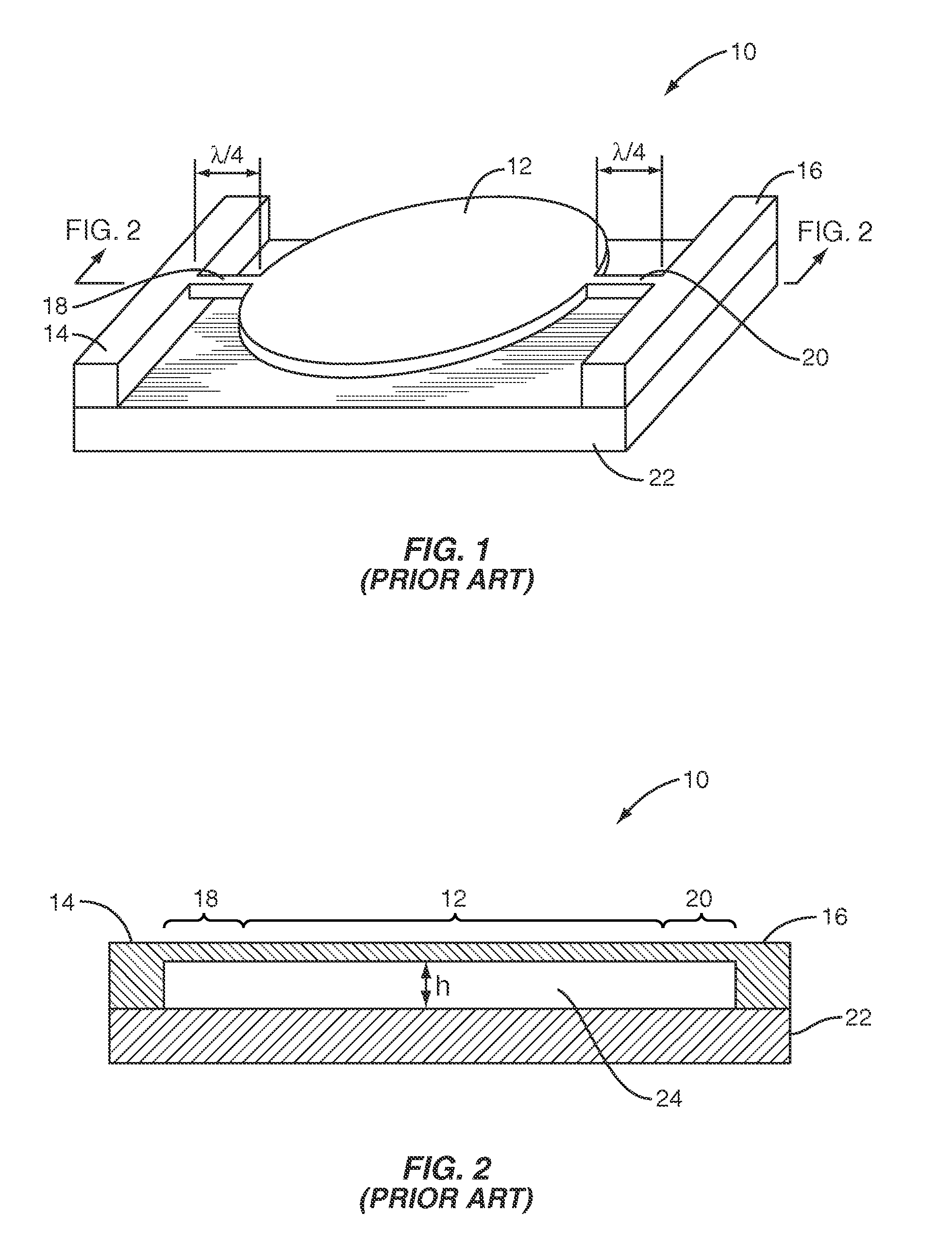Anchor/support design for MEMS resonators
a technology of microelectromechanical systems and support structures, applied in the direction of impedence networks, electrical apparatus, etc., can solve the problems of reducing limiting the quality factor (q), and degrading the quality factor (q) of the conventional mems resonator, so as to minimize or substantially reduce the loss of anchors, improve the quality factor (q) of the conventional mems reson
- Summary
- Abstract
- Description
- Claims
- Application Information
AI Technical Summary
Benefits of technology
Problems solved by technology
Method used
Image
Examples
Embodiment Construction
[0031]The embodiments set forth below represent the necessary information to enable those skilled in the art to practice the invention and illustrate the best mode of practicing the invention. Upon reading the following description in light of the accompanying drawing figures, those skilled in the art will understand the concepts of the invention and will recognize applications of these concepts not particularly addressed herein. It should be understood that these concepts and applications fall within the scope of the disclosure and the accompanying claims.
[0032]The present invention provides support, or anchor, structures for MEMS resonators that reduce or eliminate one or more of the anchor losses occurring in the conventional MEMS resonator 10 of FIGS. 1 and 2. Before discussing specific embodiments of the present invention, a mathematical understanding of a MEMS resonator may be beneficial. FIG. 4 is a block diagram of a MEMS resonator 26. The MEMS resonator 26 includes a resona...
PUM
 Login to View More
Login to View More Abstract
Description
Claims
Application Information
 Login to View More
Login to View More - R&D
- Intellectual Property
- Life Sciences
- Materials
- Tech Scout
- Unparalleled Data Quality
- Higher Quality Content
- 60% Fewer Hallucinations
Browse by: Latest US Patents, China's latest patents, Technical Efficacy Thesaurus, Application Domain, Technology Topic, Popular Technical Reports.
© 2025 PatSnap. All rights reserved.Legal|Privacy policy|Modern Slavery Act Transparency Statement|Sitemap|About US| Contact US: help@patsnap.com



